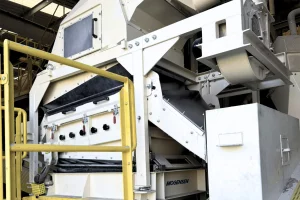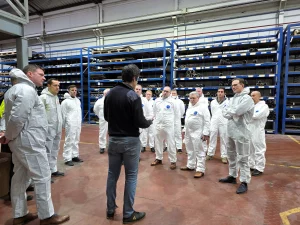Efficient dry separation for a sustainable circular economy
Anyone who has ever worked on a recycling line knows the real difficulties don’t begin at disposal. They begin with what happens afterward, as waste moves through the process. Opposed to what we are led to believe, waste doesn’t come in tidy bins. It comes compressed, jammed, torn, commingled, and almost never tagged.
Over the past decade, the scale and variety of waste have grown faster than the systems designed to contain them. In recent years, global plastic production has hovered near 400 million tons annually, while recycling rates remain stubbornly below 10%. Urban expansion, packaging trends, and increasingly short-lived product life cycles have placed great stress on a culture of disposability that existing infrastructures were never built to sustain.
But what if the problem isn’t the garbage itself, but rather the way we attempt to sort it?
The principle behind dry density sorting is not new. It is based on the fact that particles behave differently in the presence of air and vibration. Lighter materials move one direction and heavier materials move another, even when they appear nearly identical.
Water-based systems, though effective in some settings, now meet growing resistance from cost, regulation, and the consequences of the wastewater they leave behind. Every liter used must be cleaned, recirculated, or discharged. When water use is no longer an option, materials can still be separated through a dry, gravity-based process that produces clean results without sludge. This process works in areas where water cannot reach, among broken concrete and copper threads, in compost piles that are still warm from fermentation, and through the tangled remains of electronics and packaging.
From there, unexpected recoveries begin to surface. A compost stream can be filtered without losing its biological integrity. Construction waste releases recoverable metals while retaining usable fines. Even composite flows of plastics, textiles, and wood, can be separated into usable fractions because the process detects what standard systems miss.
GSort tables differ because they’re not built for ideal feedstock scenarios. Mixed, damp, uneven, contaminated; that’s the kind of input they meet head-on. With a treatment deck redesigned for increased slope, chevron-shaped flow guidance, and higher amplitude, GSort makes dry separation repeatable, even when input conditions vary by the hour. And while other dry sorting systems may struggle with capacity, GSort delivers twice the flow rate of conventional tables of the same width on the market today. Where wet systems rely on saturation and need downstream drying, GSort works with air, vibration, and the natural difference in density. The outcome is zero water use, less post-processing, and steadier performance in inconsistent conditions.
Dry sorting reduces stoppages, simplifies maintenance, and avoids the residue that complicates other sorting processes. When materials arrive in unpredictable combinations, GSort provides a way to keep running without adjusting the entire line to suit one fraction. This brings new potential to material streams that were previously considered unrecoverable. In many plants, up to 30% of incoming waste is sent to landfills because it is too mixed, inconsistent, or costly to process with conventional methods. Some of those streams, particularly dense minerals like barite, hematite, or even abrasive materials like manganese, can now be recovered cleanly and reliably.
Densimetric separation remains one of the lesser-known techniques in the industry, usually overlooked in favor of technologies like eddy currents or X-rays. But its simplicity, flexibility, and dry operation make it an opportunity hiding in plain sight. The new potential of GSort technology extends even to material streams not yet tested. In each new application, it offers a chance to replace more complex and costly systems.
Everything that is thrown away should go somewhere. Nothing truly becomes waste when we process it wisely. The real value lies in finding the method that matches each material’s potential for a second life, and many more after that.
Press contact
Corporate Communications
corporate-communications@joest.com
















